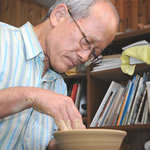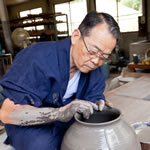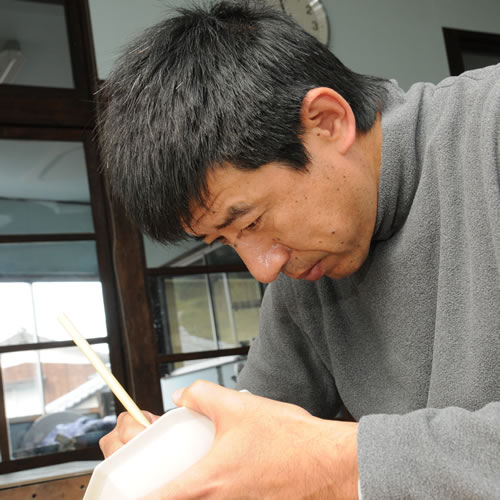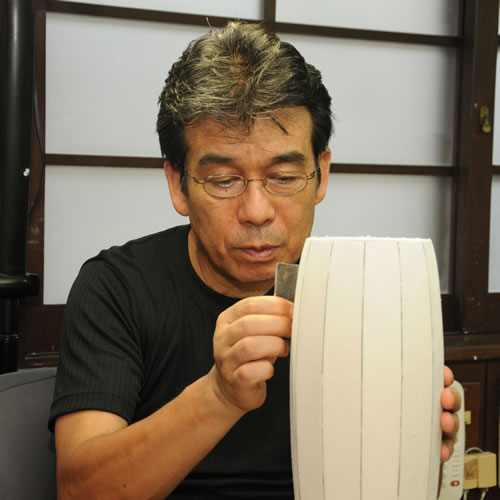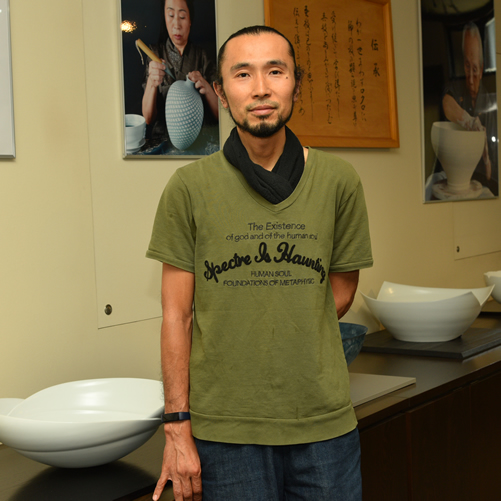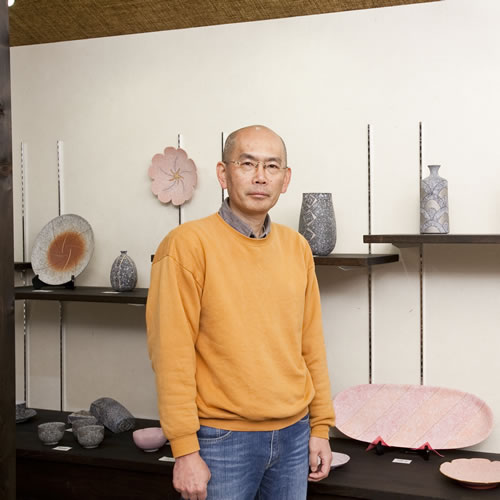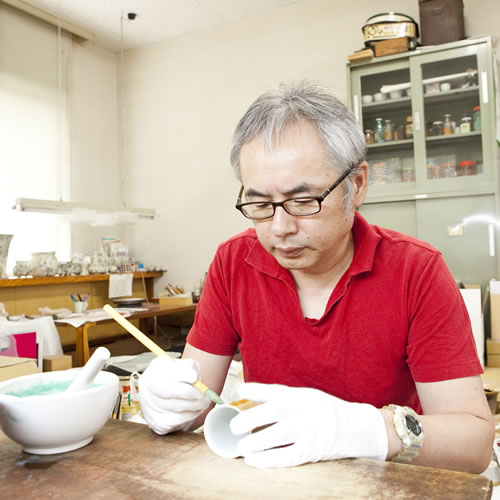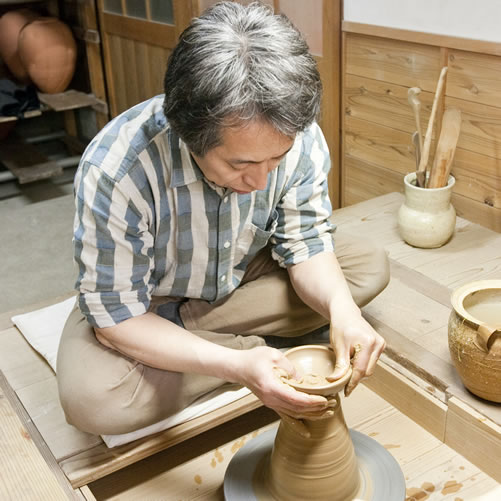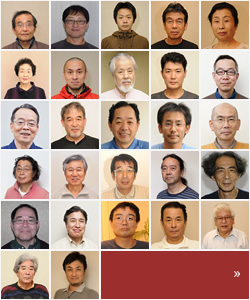TOP > Ceramics > White Porcelain
White Porcelain
Artistic ceramics sprinkled translucent glaze on white unglazed pottery
White porcelain is a general term for porcelains putting clear glaze on a body. It was made by removing iron from the body of celadon porcelain and glaze. During the Chinese Tang period (618-907), fine white porcelains had already made, but it was not until ceramic stone was discovered in Arita in 1601 that Japanese porcelain was produced. The white porcelain had become known rapidly along with Arita’s prosperity. The color reveals the artists’ technique of ceramic forming so that the white porcelain requires the skills for the potter's wheel. The white porcelain jar during the Korean Joseon Dynasty was considered as top quality products.
In Japan, NAKAMURA, Seiroku is now the greatest figure for this type porcelain. His technique for the ceramic forming is always beyond words. His grandson, NAKAMURA, Seigo has succeeded the heritage to be a ceramic artist of the white porcelain. Another proficient artist, NAKAO, Yasuzumi came up with his original technique of coloring. NONAKA, Taku gives Yagasurimon (the Arrow-feather design) into it as well. Mikawachi Ware has been lasted over 400 years, owing to the Hirado clan’s support. Their tradition would not survive without proficient techniques which has attracted Japanese people for hundreds of years. In fact, it should be passed onto future generations not just as techniques, but also a Japanese treasure.
The white porcelain has dyeing and a colored picture. The dyeing is to color the white porcelain by Gosu and the colored picture is to paint it by pigments. Hiradokakusho Kiln in Mikawachi has kept up the wonderful blue dyeing for generations. The famous colored picture was the Red Picture in Ming dynasty of China. It was imported to Japan around 1640 and has developed Japanese original decoration with the seasonal colored pictures. In addition to the famous Kakiemon Kiln and Imaemon Kiln, SHOMURA, Ken who owns the traditional Banko Kiln has developed the dyeing; his original color of deep blue and deep red is highly acclaimed. TAKAMORI, Seiji an artist, works on his original coloring with a hand-turning wheel and hand-painting, which is captivated.

